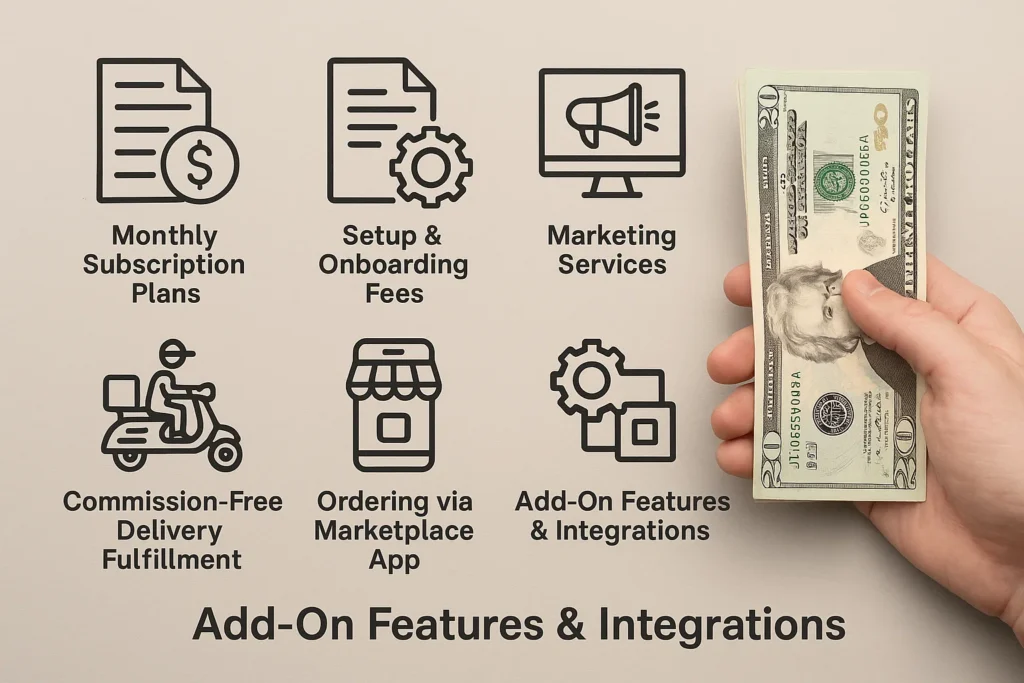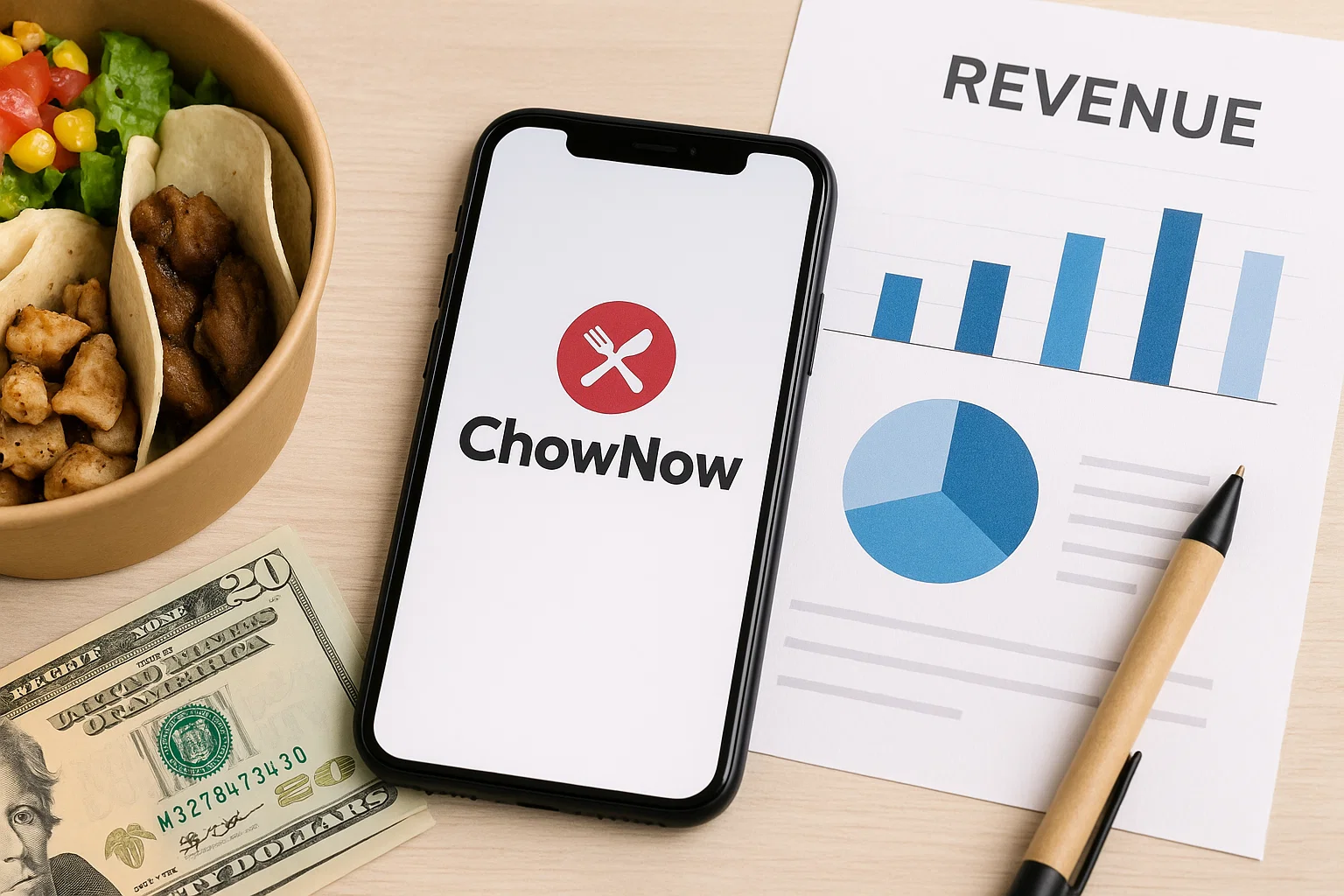ChowNow is not your typical food delivery platform. While giants like Uber Eats and DoorDash dominate the space with high commissions and aggressive marketplace models, ChowNow takes a different route — empowering local restaurants with commission-free, white-label ordering systems. It focuses on helping independent eateries build direct relationships with their customers through branded apps, websites, and marketing tools.
Founded in 2011 and operating across the U.S., ChowNow has processed millions of orders without charging restaurants hefty per-order commissions. Its value proposition is simple: give restaurants control, protect their margins, and let them own their customer data.
But how does a platform that doesn’t charge commissions still manage to generate sustainable revenue?
In this blog, we’ll unpack the revenue model of ChowNow, explore how it works in today’s competitive food tech landscape, and show how startups can replicate this model with a ChowNow clone from Miracuves.
How ChowNow Makes Money
Unlike marketplace-based food delivery platforms, ChowNow’s monetization strategy revolves around empowering restaurants with tools — not charging them per transaction. Here’s how ChowNow earns revenue:
- Monthly Subscription Plans – Restaurants pay a fixed monthly fee for access to branded ordering systems, apps, and POS integrations.
- Setup & Onboarding Fees – One-time setup charges for custom apps and digital storefronts.
- Marketing Services – Optional upsells like email marketing, social media promotions, and Google Ads management.
- Commission-Free Delivery Fulfillment – Partnerships with third-party delivery providers where costs are passed directly to customers.
- Ordering via ChowNow Marketplace App – While the core is white-label, ChowNow also runs a marketplace app with zero commission but earns via fees on optional services.
- Add-On Features & Integrations – Loyalty programs, CRM tools, and integrations with tools like Toast or Square bring additional revenue.

This diversified, SaaS-style revenue model allows ChowNow to earn consistently without undercutting the restaurants it supports.
ChowNow helps restaurants go digital without heavy commissions—explore the ChowNow business model to see how it empowers local eateries.
Detailed Breakdown of Revenue Channels
Monthly Subscription Plans
ChowNow’s core offering is a flat-rate subscription for restaurants. Plans typically start at around $99/month and scale based on features, order volume, and locations. This gives restaurants access to their own online ordering system — fully branded — with zero commissions on sales.
- Who Pays? Restaurant owners
- Why It Scales? Predictable recurring revenue; no dependency on per-order commissions
Setup & Onboarding Fees
To get started, restaurants often pay a one-time onboarding fee (around $399–$1,000) for design, integration, and initial configuration of their white-label app or ordering system. This creates upfront cash flow and offsets setup costs.
- Who Pays? New clients during implementation
- Why It Scales? Covers setup cost and increases platform stickiness
Marketing Services
ChowNow offers optional digital marketing add-ons like email campaigns, Facebook and Instagram ads, SEO optimization, and Google Ads setup. These services are priced separately or bundled into premium plans.
- Who Pays? Restaurants looking to drive more orders
- Why It Scales? Value-added upsells that require minimal marginal effort
Delivery Fulfillment (via Partners)
ChowNow doesn’t operate its own delivery fleet. Instead, it integrates with third-party providers like DoorDash Drive. Delivery fees are passed to customers or restaurants — but ChowNow may earn a service markup or handling fee on the coordination.
- Who Pays? End-users or restaurants (depending on the model)
- Why It Scales? No logistics burden while enabling full-service functionality
ChowNow Marketplace App
Besides white-label ordering, ChowNow runs a consumer-facing app where users can discover and order from partnered restaurants. While it doesn’t charge restaurants commission here either, it monetizes through optional restaurant promotions and premium placements.
- Who Pays? Restaurants opting into promotional tools
- Why It Scales? Additional discoverability for restaurants, passive monetization for ChowNow
Add-On Features & Integrations
From loyalty programs and automated re-engagement tools to POS integrations (with systems like Square and Toast), ChowNow offers a suite of paid add-ons that enhance the user and merchant experience.
- Who Pays? Restaurants subscribing to extra features
- Why It Scales? Modular pricing increases ARPU (average revenue per user)
ChowNow’s seamless UI, payment integrations, and customer engagement tools drive adoption—check out the ChowNow features list that fuels growth.
Why This Revenue Model Works in 2025
ChowNow’s commission-free, subscription-based approach is especially relevant in 2025 — as restaurants demand more control, and consumers seek ethical ways to support local businesses.
Shift Toward Restaurant Empowerment
Post-pandemic, restaurants have become increasingly wary of third-party delivery apps eating into their profits. ChowNow’s fixed-fee model empowers them to maintain healthy margins while owning their customer data — a key asset in the digital age.
Rise of Direct-to-Consumer (D2C) in Food
Just as brands in other industries go D2C to bypass middlemen, restaurants too are investing in direct online ordering to reduce dependency on marketplaces. ChowNow enables this transition affordably and at scale.
Predictable Revenue in an Unpredictable Industry
In a business as volatile as food service, recurring subscription revenue gives ChowNow consistent cash flow. It also helps restaurants plan better financially — a win-win on both sides.
Growing Importance of Data Ownership
With privacy concerns and customer retargeting restrictions growing, having direct access to customer emails, preferences, and order history is gold for restaurants. ChowNow’s model delivers this without sharing customer data with third parties.
Regulatory Trends Favoring Transparent Fees
Cities like San Francisco and New York have introduced caps or mandatory disclosures on delivery app commissions. ChowNow’s transparent, commission-free pricing positions it as a regulatory-aligned, future-ready player.
ChowNow grew by putting restaurants first with flat-fee pricing and digital tools—explore the ChowNow marketing strategy that fuels local growth.
Can Startups Replicate ChowNow’s Revenue Model?
Yes — but replicating ChowNow’s model from scratch isn’t as simple as skipping commissions.
You’d need to build a robust, white-label platform that supports mobile ordering, website integration, POS sync, loyalty systems, marketing tools, and optional delivery support. Add to that: custom branding for each restaurant, data privacy safeguards, and scalable subscription management.
It’s a major technical and operational lift.
That’s where Miracuves can help. With our fully customizable ChowNow Clone solution, startups can launch their own restaurant-first ordering platform that mirrors ChowNow’s proven revenue strategy.
Here’s what you get:
- Ready-made multi-restaurant SaaS with white-label capabilities
- Subscription billing modules with flexible pricing
- Admin control for onboarding, setup fees, and add-on services
- Built-in loyalty, marketing, and analytics tools
- Seamless third-party delivery integration support
- Scalable design to serve local or national markets
Instead of spending years in development, you can go live in weeks — with monetization features ready from day one. Whether you’re targeting a single city or building the next big food tech startup, Miracuves gives you the foundation to succeed.
The ChowNow Clone by Miracuves is a feature-rich restaurant ordering solution priced at $2,899.00 (originally $3,699.00).
It enables restaurants to launch branded online ordering platforms with direct customer connections and independent eatery management.
Go live in 3 days with complete source codes and Miracuves’ full deployment support.
Launching a restaurant-friendly platform starts with the best ChowNow clone scripts in 2025, scales faster when startups choose our ChowNow clone over costly custom builds, and becomes achievable with the right planning using the ChowNow app development cost guide.
Conclusion
ChowNow has carved a unique space in the food ordering landscape by putting restaurants first. Its commission-free model, built on subscriptions, onboarding fees, and value-added services, not only generates consistent revenue — it also builds long-term loyalty and trust with local businesses.
In 2025, as the demand for ethical, restaurant-friendly tech solutions grows, ChowNow’s approach is more relevant than ever.
The great news? You don’t have to build it all from scratch.
With Miracuves’ ChowNow Clone, you can launch a branded, restaurant-focused ordering platform that’s fully equipped with scalable monetization features. Whether you’re an entrepreneur or an agency, our solution helps you replicate a proven revenue model — fast, affordably, and with full customization.
FAQs
How does ChowNow generate revenue?
ChowNow makes money through monthly subscriptions, one-time setup fees, marketing services, and premium add-ons — all without charging restaurants per-order commissions.
Is ChowNow profitable in 2025?
While specific financials are not public, ChowNow’s predictable subscription model and growing customer base position it for strong unit economics and long-term sustainability.
What are the main income sources for ChowNow?
Its primary income streams include restaurant subscriptions, setup fees, marketing services, loyalty features, and optional delivery integrations.
Can startups use the same revenue model as ChowNow?
Yes — but building such a platform from the ground up is costly and complex. A white-label ChowNow clone from Miracuves makes it faster, easier, and more cost-effective to launch.
Does Miracuves offer a ChowNow clone with monetization features?
Absolutely. Miracuves’ ChowNow clone includes all key monetization features like subscriptions, setup billing, add-on modules, loyalty tools, and partner integrations — fully customizable to fit your business.
Related Articles :-
- Revenue Model of Foodpanda: How the Food Delivery Giant Makes Money
- Revenue Model of HungerStation: How Saudi Arabia’s Food Delivery Leader Drives Profit
- Revenue Model of Goldbelly: How It Serves Gourmet Food with a Side of Profits
- Revenue Model of Just Eat: How the Food Delivery Giant Monetizes Every Order








